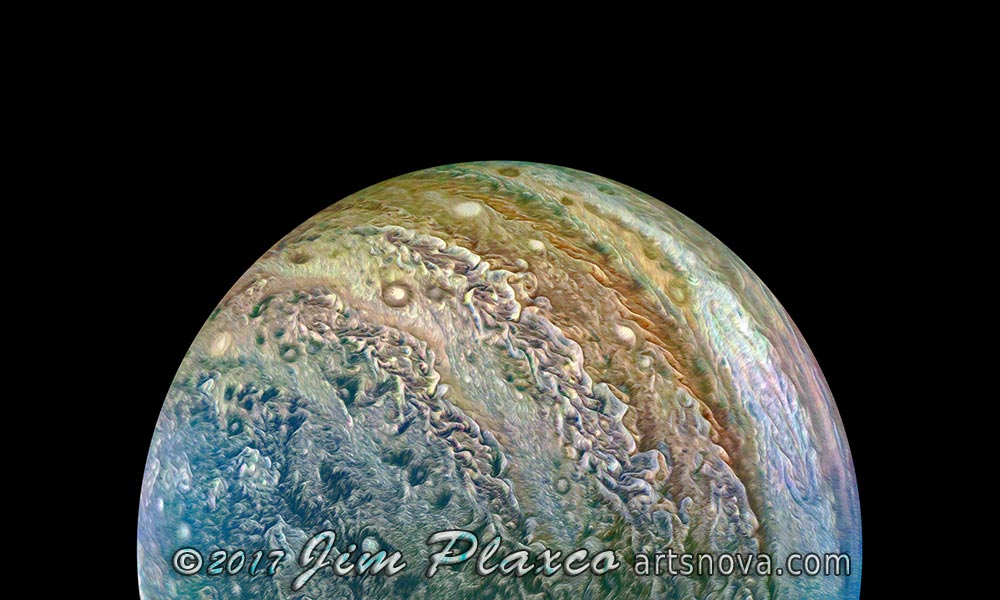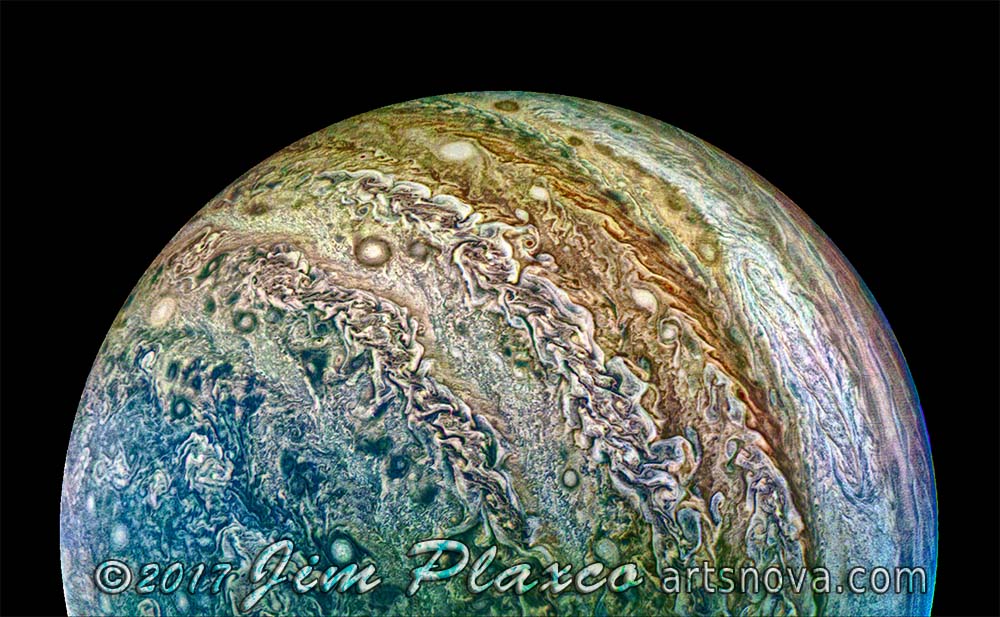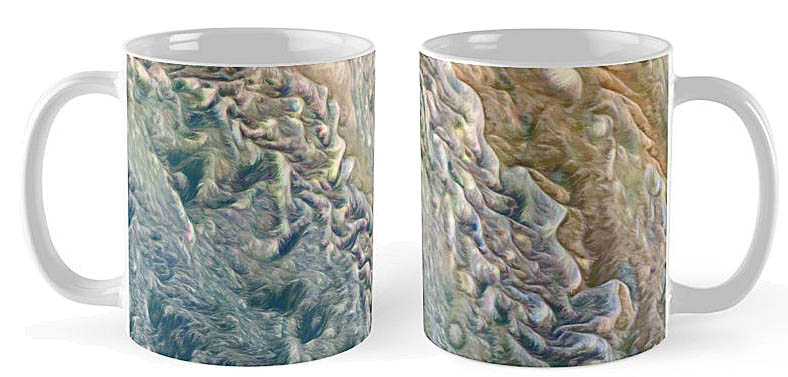Juno Perijove 8 View of Jupiter Generative Space Art
Recently I got back in to working with images of Jupiter taken by the Junocam camera on the NASA Juno mission to Jupiter. Most of the time I've spent was in the early phase of the mission as I attempted to come up with a work flow that would allow me to effectively process the raw images that were being made available to the public. My tool set consisted of Rawtherapee, Adobe Photoshop CS4, and a couple of Processing programs I had written. I also experimented with using some other software tools. You can read about my initial adventures in Image Processing and the Juno JunoCam. Once I had come up with a reasonable work flow my interest waned and other projects percolated up the to the top of my task list.
Cassini's plunge into Saturn a week ago led me to revisit the Junocam web site. Finding an appealing image from the perijove 8 sequence of images, I downloaded it and ran it through my work flow. Pleased with the results, I submitted it to the Image Processing section of the Junocam site.
You will find the above image on the Junocam web site at Junocam Perijove 8 Poi: Phantom Image Processing
No sooner had I finished work on the above image than the thought hit me to create a generative painting of the image. I really was taken by the colors and complex patterns of the Jovian atmosphere and felt that it would make a wonderful subject.
The first decision I had to make was with respect to which of my generative painting programs I would use. I decided on using a program that I've been actively modding (aka incremental development) over the last year – with each modification adding some new category of functionality.
In creating the painted version of the image of Jupiter, my principal artistic challenge was deciding whether to have a starry sky as a background or to simply go with a flat black background. For my aesthetic tastes for this particular image, I decided to go with a simple flat black background.
Another artistic decision was to figure out whether or not I wanted to soften Jupiter's limb. Did I want Jupiter to be hard edged or soft edged? In this case, I opted for the soft edged approach.
The last decision was how much negative space to provide. For those not familiar with negative space, it is simply the space that surrounds the object in the image. Consider as an analogy the concept of white space – the amount of empty space that separates content elements on a web page. In this case it was a question of did I want Jupiter to fill the entire canvas or did I want it to fill only a fraction of the canvas. Experimenting with different ratios of width to height and sizes I ultimately decided on what you see above. One of the things about the artwork is that due to the abstract nature of the Jovian atmosphere, you can pretty much hang the painting at any orientation.
For details about the artwork, which is 50 by 30 inches, see the art gallery page for Juno Perijove 8 View of Jupiter
I have also made a cropped and downsized version of the artwork available on a variety of products in my Redbubble gallery: Jupiter On Juno Perijove 8 artwork on Redbubble
Jupiter On Juno Perijove 8 artwork on Redbubble
My vote for the most artistic planet in the solar system definitely goes to Jupiter.
| Return to the Blog Index | This entry was posted on Monday, September 25th, 2017 at 3:07 pm and is filed under Astronomical Art, Generative Art, Space Art.


